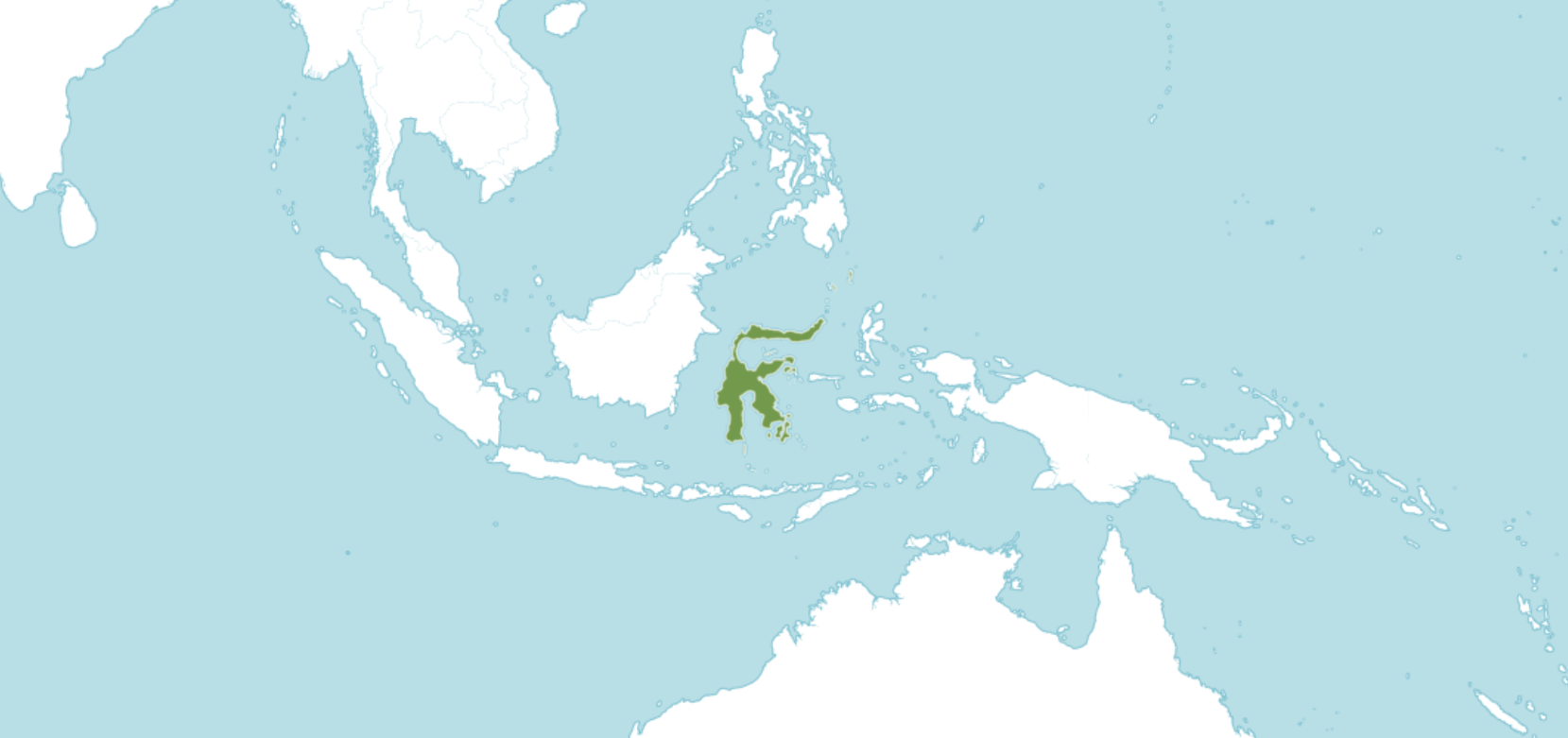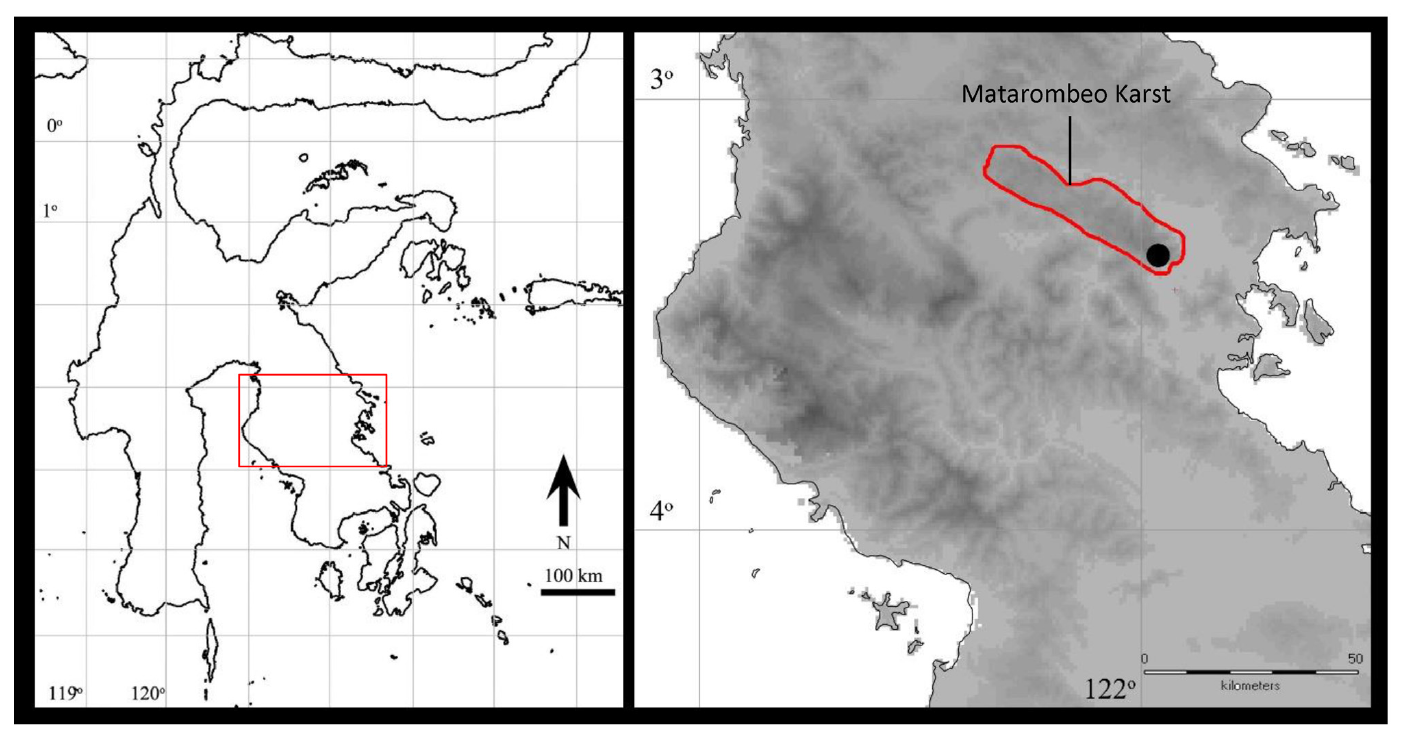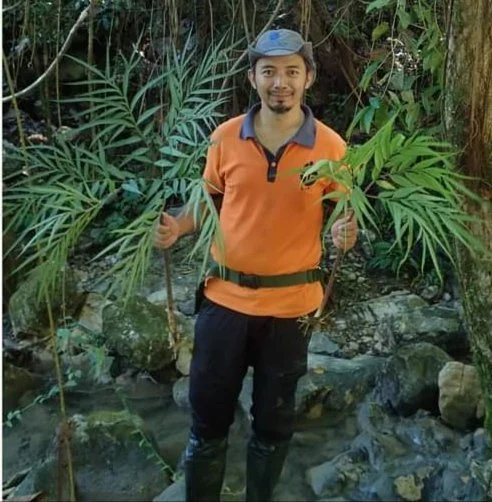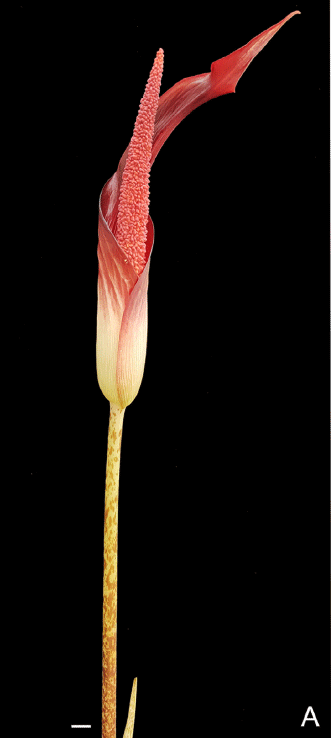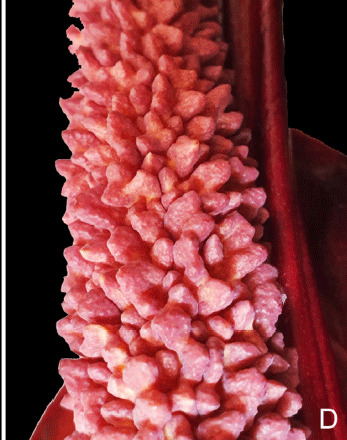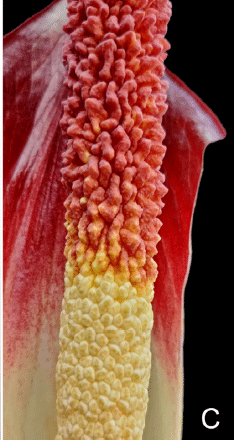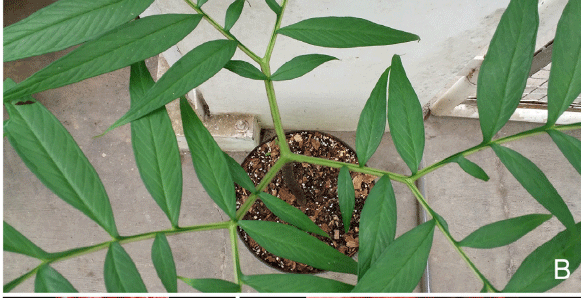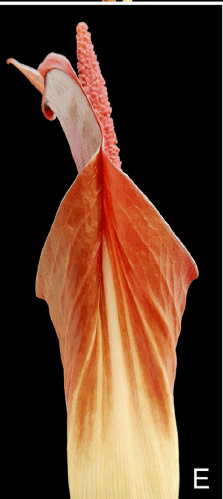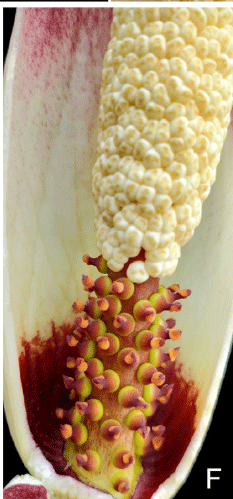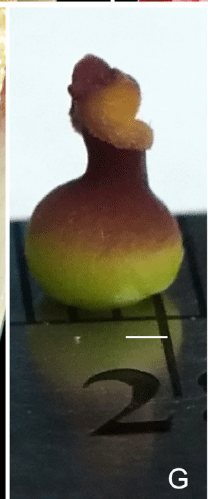AMORPHOPHALLUS ARDII
ORIGINAL DESCRIPTION:
Amorphophallus ardii Yuzammi & Hetterscheid, sp. nov.
Amorphophallus ardii is nearly unique in the entire genus because of the verrucate appendix with both large and small, often slightly laterally compressed, irregular or conical warts. Of the SE Asian species, the most similar in morphology is the Philippine Amorphophallus palawanensis Bogner & Hetterscheid (1992 : 437). However, Amorphophallus palawanensis has a smooth, shorter and more conical, stipitate appendix, a more densely verrucate inside of the spathe base, a terminal/apical stigma and a much more irregularly shaped tuber.
Type:—Prepared from a cultivated plant in the nursery of the Research Center for Plant Conservation and Botanical Gardens–LIPI. Original collection: Indonesia, Sulawesi Island, Southeast Sulawesi, North Konawe Regency, Matarombeo limestone mountain range, S 3.31880, E 122.06889, 09 September 2019, YI 23001 (holotype BO!).
SYNONYMS:
HOMOTYPIC SYNONYMS: N/A
HETEROTYPIC SYNONYMS: N/A
ACCEPTED INFRASPECIFICS: N/A
DISTRIBUTION: Indonesia | Sulawesi
Left: Overview of Sulawesi Island. Right: Matarombeo limestone mountain range in Southeast Sulawesi (red lines) and the location where the new species was discovered in Matarombeo karst (black dot).
CLIMATE: Unknown
ECOLOGY: Growing in lowland limestone mountain forest, at the base of rock walls of karst cliffs, in humose substrate, in light shade, altitude ca. 10 m. Only known from the type locality, restricted to the Matarombeo limestone mountain range, North Konawe Regency, Southeast Sulawesi, Indonesia
SPECIES DESCRIPTION:
Tuber globose, dirty white, to ca. 8 cm in diam., no offset development. Leaf solitary. Petiole ca. 60 cm long, ca. 1.5 cm in diam., slightly papery to the touch, background colour creamy, with dark-brown greyish blotches, these sometimes overlain with spotted greyish-green pattern, and with some short whitish line. Lamina strongly dissected. Rachis unwinged in the proximal parts, ca. 80 cm in diam. Leaflets narrowly lanceolate, distant, ca. 8–30 cm long, 1.5–6 cm wide, dark green adaxially, light green abaxially, base oblique, apex caudate, margin entire, midrib impressed adaxially, prominent abaxially.
INFLORESCENCE: Inflorescence solitary with long peduncle. Peduncle smooth, ca. 57 cm long, ca. 2 cm in diam., background colour light green with numerous reddish-brown spots, tiny whitish dots. Spathe erect, lanceolate, ca. 33 cm long, ca. 6 cm in diam., base and limb not separated by a constriction, the former convolute, tubular, outside dirty yellowish-green to whitish, inside basal part deep reddish-purple and longitudinally ridged, higher up turning whitish. Limb erect, the upper part bent forward and strongly plicate along the midrib, with both lateral sides folded backwards, outside basal part dirty whitish, upper part largely reddish-purple, inside basal part whitish, then reddishpurple. Spadix shorter than spathe, ca. 27 cm long, sessile. Female zone cylindric, 4 cm long, 2.3 cm in diam., flowers distant. Male zone obconic, 5.5 cm long, 2.4 cm in diam. at the top, flowers congested. Appendix narrowly elongate conical, 17 cm long, 2.5 cm in diam. at the base, tapering toward the top, acute, entirely and densely covered with conical, often slightly laterally compressed staminodes, reddish-purple. Ovaries globose, ca. 6 mm high, ca. 3.5 mm in diam., unilocular, lower half yellowish-green, upper half reddish-brown. Style ca. 1 mm long, 0,5 mm in diam. Stigma subapical to entirely lateral on the style, partly encircling it, transversely bilabiate, free tip of the style acute. Male flowers consisting of 2–4 stamens. Stamen ca. 0.3 long, 0.2 in diam., filaments connate, anthers truncate, ca. 3 mm long, 1,0–1,5 mm in diam., creamy, pores apical, oval or rounded. Infructescence unknown.
VARIEGATED FORMS: N/A
ETYMOLOGY: The species is named after Wisnu Handoyo Ardi, botanist and horticulturist of Begonia, who discovered and collected the new species.
NOTES:
Amorphophallus ardii shares different morphological features with a number of species like Amorphophallus palawanensis and other Philippine species (Hetterscheid et al. 2020). Since all Philippine endemic species belong to subg. Amorphophallus (Claudel et al. 2017) it is here assumed that the same holds for the new species. The Matarombeo limestone mountain range is very poorly explored (Thomas & Ardi 2018), and very few botanical expeditions are conducted. The difficulty to reach the site is one of obstacles that causes the limestone mountain range of Matarombeo in Southeast Sulawesi to be largely unexplored. According to Ardi (pers. comm.), only two Amorphophallus specimens were found during his field expedition suggesting a high conservation status (provisional: Endangered). However, further conservation assessment has to be done.
CULTIVARS: N/A
HYBRIDS: N/A

